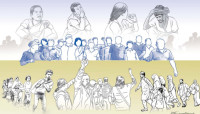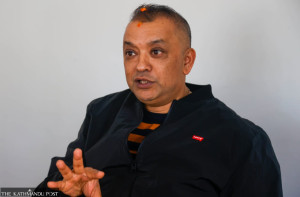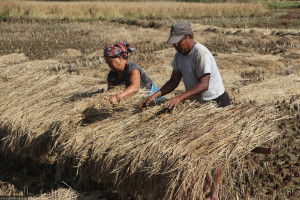Opinion
A mare’s nest
The ongoing predicament in humanities and medical education calls for everyone to fight their corner more effectively
A simple narrative, an absurdly repetitious gesture of governments, and the fight for the equal access of common people and subalterns to medical education launched solely by one good-meaning Gandhian surgeon named famously in this country as Govinda KC, have opened up many aspects of education system in the country. In short, it is not heartening. My own field of action is humanities, and that is tantalisingly in crisis. Medical education despite the hullaballoo and bravados of those in power and outside, is heading towards chaotic times. New developments in medical education in a country that has a history of great medical doctors, a few but good hospitals, devoted ideal nurses, are all indicating that now things have changed in such a way that they leave very little room for us to imagine the future directions.
I am inundated with questions that I cannot answer myself. The most difficult ones are surfacing each day since this Gandhian man started his 15th fast-onto-death strike on June 30 2018 in a dingy room in Jumla assailed by smell of urine and faeces. He sat there because the government has recently banned some public places for staging protests including Satyagraha. I do not want to repeat the course of events that everyone is following, and I do not know what changes will have occurred when this essay comes out.
The ensuing snafu
This somewhat bizarre but uncannily complex national debate about medical education impels those of us who have devoted lives in promoting humanities in our tertiary education system, to think with concern. We have been a part of social science education programme in universities making curricula, teaching and disseminating it. In terms of keeping it alive, we are almost fighting a losing battle unless some miracle happens. However, reform in education programmes is a broad area. No single dreamer and fighter like Govinda KC can toss minuscule storms into Parliamentary sessions and on the streets. But a very important question that cannot be discussed in detail here for lack of space is, are we heading towards educational chaos in humanities, medicines, managements, engineering and other branches of learning? I do not know the answer, but I can mention some indicators that suggest at least medical education and the humanities, if not all the other segments of education mentioned here, are embroiled in problems, which they have created or others have created for them. We are talking more about implosions here because the problems within them have risen from their structural peculiarities.
Medical education as the history of the recent times, at least of a decade, is showing that a form of crony capitalism that has found medical investment and production of “doctors” as the most profitable option seriously affect it. The problem is that the money is big, and it buys everything. Crony capitalism is entrenched in worldly affairs and it has deep roots, thereby making it difficult to uproot. I do not want to elaborate on the subject of medical education here, because I want to use the space to put some problems faced by the state of humanities in our universities.
A Routledge book that bookseller Madhab Lal Maharjan strongly recommended me to read given my anxiety about the dwindling humanity in our universities, generated some empathy with the Indian educationists. In this collection entitled The place of humanities in our universities all the 12 contributors touch upon the problems faced by humanities education in India which ranges from saving it to making it more digital friendly and value oriented at the same time. But they all agree that humanities education is indispensable in our times. That cuts deeper.
We can take an example of the Central European University that was founded in 1991 by the academics mostly from Eastern Europe. The location of this university is Budapest and Prague. Their purpose is to teach humanities to students who were not exposed to multiple interpretations of the subject. This realisation of a need of humanities education in the post-1990 Eastern European education system has already hit a major snag in Budapest. The gist of the argument is that humanity in education system today does not curry favour from the rulers and political parties that dominate the societies.
A common ground
The Nepali scenario is even bleaker. Humanities education that occupied a place of importance in Nepal for a long time is now imploding slowly. The departments cannot attract students. They are functioning with the same old curricula. Keeping abreast of the new developments in the education of humanity is no longer the concern of the related departments and educators. Though humanities education was the sole educational system of Nepal for many years, which produced elites, civil society activists, teachers, politicians and educators, it is seeing its own dissolution because those elites and educationists are no longer interested in keeping humanities education in place. What we will see instead is that the political parties will opt to keep the humanities departments going as long as they keep producing cadres, loyalists and manipulators for them. That will multiply the crisis because such pragmatic issues are entirely against the very spirit of humanities education.
The present medical imbroglio buttressed by crony capitalism is an entirely different narrative. It is not just a crisis; it is a disaster in the medical education system. Crisis invites solutions, but disaster is the point of no return. We are worried about that. The best solution is the spirit of socialism—making medical education accessible to the common people, the subalterns, people who live in geographically cut off or remote locations, and making it cheaper and purposeful. Creating medical doctors through proper education is creating wonderful human beings who wilfully serve humanity.
I have a very good circle of friends among the young generation of medical practitioners. I became friends with them when they started inviting me to listen to their poetry, and give talks on such subjects as subjectivity and medicinal practice, creativity in medical attention and experiments. I have clearly seen that humanities education and medical education can share some common grounds in terms of achievements and understanding. But in Nepal, medicine and segments of humanities education are fighting common battles today. People’s positive spirit is the only hope.




 13.12°C Kathmandu
13.12°C Kathmandu

.jpg&w=200&height=120)







